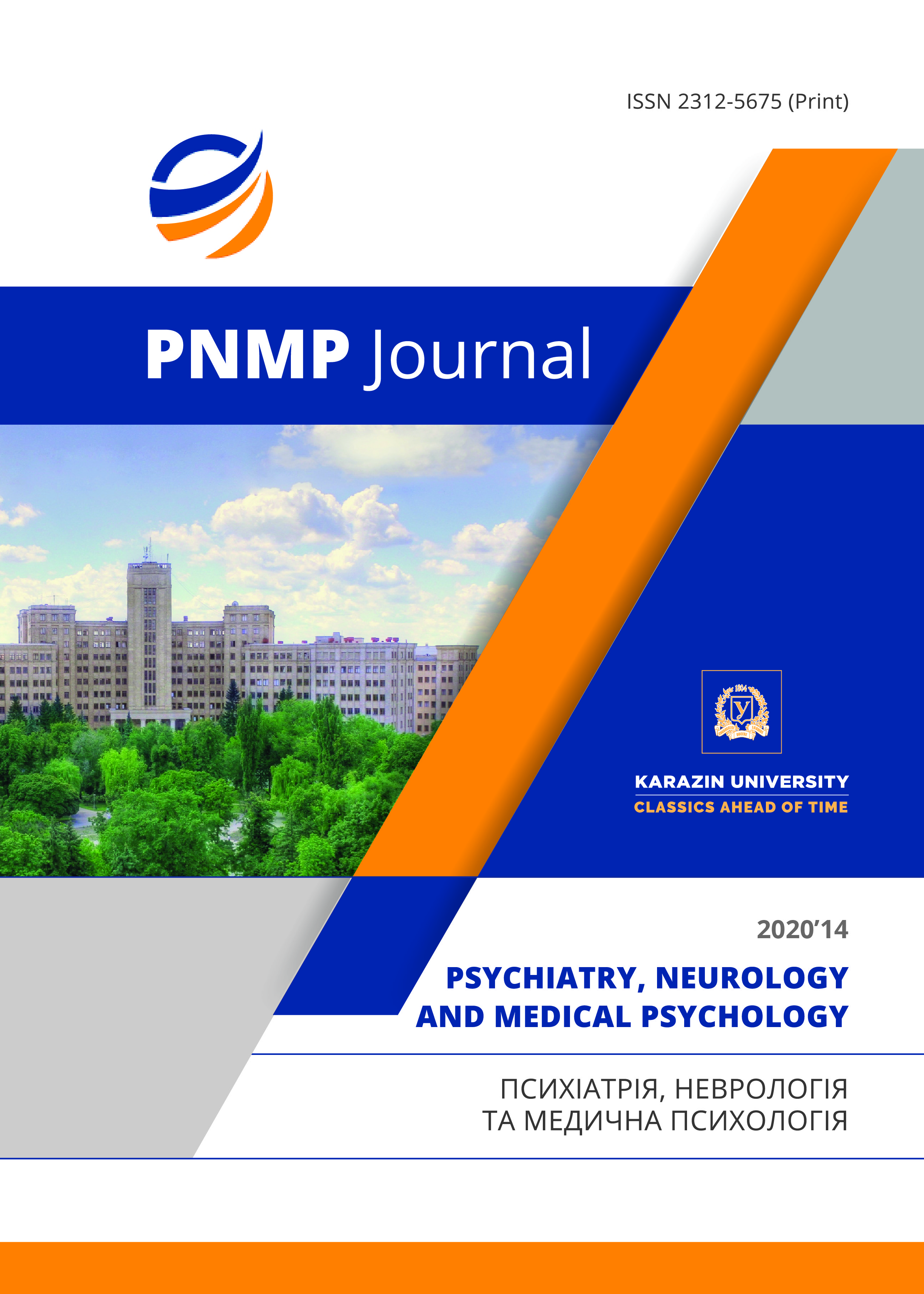Remission structure in schizoaffective disorder
Abstract
The article describes the comparative study of clinical and dynamic structure of remission in schizoaffective disorder (SAD), depending on its type. With the help of the clinical-psychopathological method with an analytical study of tavailable medical documentation and the method of follow-up examination, remissions were analyzed in 78 patients with SAD. In parallel, during the year, the severity of clinical manifestations of the disease was determined using psychometric scales (Young Mania Rating Scale – YMRS, Hamilton Depression Rating Scale – HDRS, Positive and Negative Symptoms Scale – PANSS). Several degrees of remission were identified – partial, complete clinical and complete functional remission. By partial remission, we understood a state when there was a pronounced reduction in clinical manifestations, but residual productive symptoms, poor insight and social maladjustment were observed. Complete clinical remission indicated the absence of any clinically significant signs, but social functioning was reduced. Full functional remission was characterized by the absence of any clinical signs and patient’s good social adaptation. All patients went through the stage of partial remission, however, about half of them (40 observations – 51.3%) went into complete clinical remission. Persistent partial remission which later did not transform into clinical remission was observed in 38 patients with SAD (48.7%). It was represented by the following syndromes — asthenic (28.9%), hypersthenic (23.8%), psychopathic (34.2%), residual delusional syndrome (13.1%). Complete functional remission was found in 19 patients (24.4%). The data obtained indicate that the longest and most complete remissions were observed in manic and depressive types of SAD compared with mixed ones. In the manic type of SAD complete functional remission was more common (12 cases – 38.7%), with the depressive type - complete clinical remission (8 patients – 32.0%), with the mixed type - partial remission (10 patients – 38.5%). Depending on the type of SAD remission there is a different risk of disease recurrence, therefore, the treatment and rehabilitation measures, the appointment of maintenance therapy should be differentiated.
Downloads
References
Mosolov S., Potapov A., Shafarenko A., et al. Validation of standardized clinical and functional criteria for remission in schizophrenia. Social and Clinical Psychiatry. 2011, vol. 21, no. 3, pp. 36-42.
Andreasen N., Carpenter W., Jr., Kane J.et al. Remission in Schizophrenia: Proposed Criteria and Rationale for Consensus. Am J Psychiatry. 2005, vol. 162, pp.441-449.
Marchenko A., Rupchev G., Morozova M. Validation of the scale to assess autonomy in patients with schizophrenia in remission. Journal of Medical Psychology in Russia. 2018, vol. 10, no 3(50). Available at: http://mprj.ru (accessed 10 October 2018).
Van Os Dzh., Berns T., Kavallaro T. et al. Standardized criteria for remission in schizophrenia. Clinical and Social Psychiatry. 2006, no. 11, pp. 80-83.
Lasser R., Bossie C., Gharabawi G., Kane J. Remission in schizophrenia: results from a 1-year study of long-acting risperidone injection. Schizophr. Res. 2005, vol. 77, pp. 215–227.
Smulevich A., Andryuschenko F., Romanov D., Zaharova N. Remissions for affective diseases: epidemiology, psychopathology, clinical and social prognosis, secondary prevention. Journal of Neurology and Psychiatry. 2014, no. 3, pp. 4-13.
Nutt D., Davidson J., Gelenberg A. International consensus statement on major depressive disorder. J Clin Psychiatry. 2010, vol. 71, suppl. E1, p.108.
Dupuy J., Ostacher M., Huffman J. et al. A critical review of pharmacotherapy for major depressive disorder. Int J Neuropsychopharmacoly. 2011, vol.14, no 10, pp. 1417—1431.
Patkar A., Pae C. Atypical antipsychotic augmentation strategies in the context of guideline-based care for the treatment of major depressive disorder. CNS Drugs. 2013, suppl 1, pp.29-37. DOI: 10.1007/s40263-012-0031-0.
Kotsyubinskii A., Skorik A., Aksenov I. et al. Schizophrenia: vulnerability - diathesis - stress - disease. St. Petersburg. 2004. [in Russ].
Il'ina N., Zaharova N. Long-term remission of the dyskinetic type in paroxysmal schizophrenia. Journal of Neuropathology and Psychiatry. 2010, vol.110, no 12, pp. 13-19.
Smulevich A. The problem of remission in schizophrenia: a clinical and epidemiological study. Journal of Neuropathology and Psychiatry. 2007, vol. 107, no 5, pp. 4-15.
Zaharova K. The quality and stability of remission in the application of pharmacotherapy in patients with depressive disorders. (PhD Thesis). Moscow. 2008.
Vazagaeva T.I. Quality and persistence of remission in the use of antidepressants and transpersonal psychotherapy in patients with depressive disorders. (PhD Thesis). Moscow. 2010.
Dombrovski A., Mulsant B., Houck P. et al. Residual symptoms and recurrence during maintenance treatment of late-life depression. J Affect Disord. 2007, vol. 103, no 1-3, pp. 77-82. DOI:10.1016/j.jad.2007.01.020.
Golovaha N. Adaptation of patients with schizoaffective disorder (clinical, dynamic, rehabilitative aspects). (PhD Thesis). Moscow. 2004.
Tsutsul'kovskaya M., Kaleda V. Clinical features of the course and outcome of schizoaffective psychosis, manifest in adolescence. Proceedings of the scientific-practical conference "Affective and schizoaffective psychoses". 1998, pp. 156-168.

